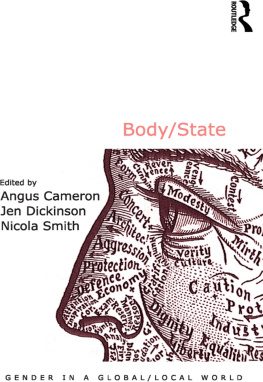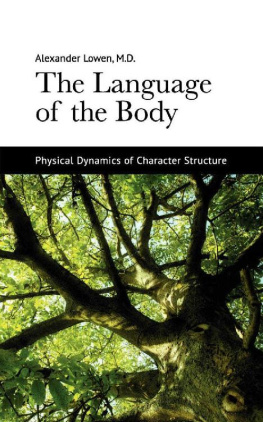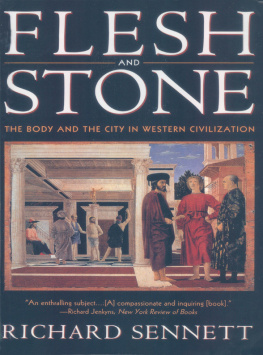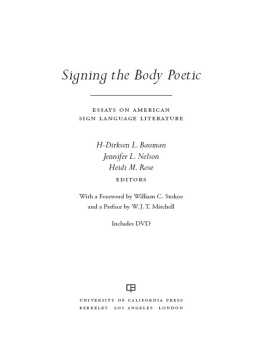THE ENDS OF THE BODY
IDENTITY AND COMMUNITY IN MEDIEVAL CULTURE
The Ends of the Body
Identity and Community in Medieval Culture
EDITED BY SUZANNE CONKLIN AKBARI AND JILL ROSS
University of Toronto Press 2013
Toronto Buffalo London
www.utppublishing.com
Printed in Canada
ISBN 978-1-4426-4470-0
Printed on acid-free, 100% post-consumer recycled paper with vegetable-based inks.
Library and Archives Canada Cataloguing in Publication
The ends of the body : identity and community in medieval culture / edited by Suzanne Conklin Akbari and Jill Ross.
Includes bibliographical references and index.
ISBN 978-1-4426-4470-0
1. Human body Social aspects Europe History To 1500. 2. Human body Symbolic aspects Europe History To 1500. 3. Identity (Psychology) Europe History To 1500. 4. Individuality Europe History To 1500. 5. Community life Europe History To 1500. 6. Literature, Medieval History and criticism. 7. Human body in literature. 8. Human body in art. 9. Civilization, Medieval Sources. I. Akbari, Suzanne Conklin II. Ross, Jill, 1961
CB353.E53 2012 940.1 C2012-904804-6
University of Toronto Press gratefully acknowledges the financial assistance of the Centre for Medieval Studies, University of Toronto in the publication of this book.
University of Toronto Press acknowledges the financial assistance to its publishing program of the Canada Council for the Arts and the Ontario Arts Council.
University of Toronto Press acknowledges the financial support of the Government of Canada through the Canada Book Fund for its publishing activities.
Contents
SUZANNE CONKLIN AKBARI AND JILL ROSS
ANNA TAYLOR
CHRISTINE KRALIK
AMY APPLEFORD
SYLVIA PARSONS
SARAH SHEEHAN
JILL ROSS
DANIELLE M. WESTERHOF
CATHERINE RIDER
LINDA G. JONES
ELMA BRENNER
WENDY A. MATLOCK
SUZANNE CONKLIN AKBARI
Illustrations
Preface
This volume has, appropriately, had a long gestation, and the editors would like to thank those who have provided support both material and moral. The Social Sciences and Humanities Research Council of Canada provided substantial support to the 2006 conference that initiated this volume (award number 646-2005-1003) and generated the earliest versions of some of the essays collected here. The conference was also supported generously by the University of Toronto, especially the Centre for Medieval Studies. As the volume progressed, with new essays being solicited and older versions being reconfigured in different ways, we profited from the advice of colleagues at Toronto and elsewhere, and would especially like to thank Isabelle Cochelin, Nick Everett, Brent Miles, Will Robins, and David Townsend. We are also grateful for publication subvention funds provided by Torontos Centre for Medieval Studies, the Centre for Comparative Literature, and the Department of English. Most recently, we have been grateful for intelligent and insightful readers of the manuscript on behalf of the University of Toronto Press, and for the unfailing guidance of their superb editor Suzanne Rancourt.
Both Suzanne Akbari and Jill Ross would like to thank those students in Medieval Studies, Comparative Literature, English, and History who participated in our seminars on body and identity over the past few years, and whose thoughtful engagement in those courses have contributed indirectly but no less meaningfully to what is valuable and useful in this book. Suzanne Akbari would also like to thank Eddie Akbari, and Yasin, Sara, Camilla, and John Akbari, who have made her work on this project easy with their practical assistance and loving support; and Jill Ross is grateful for the enthusiastic support of Mark Meyerson and Ben and Sam Meyerson.
THE ENDS OF THE BODY
Introduction
Limits and Teleology: The Many Ends of the Body
SUZANNE CONKLIN AKBARI AND JILL ROSS
As everyone knows, the end of the body is in the grave, as bone and muscle, corpuscle and fibre, are disassembled into their constituent elements. But, as everyone also knew (at least during the Middle Ages), the end of the body was also at the end of time, as soul and restored flesh were reunited in the glorified body that the righteous individual would enjoy, bathed in the bliss of the Beatific Vision. Monumental tombs of the period such as the one depicted on the medieval manuscript page reproduced on this books cover emphasize these two opposed states of corporeal being by placing a sculpted effigy of the perfect, glorified body at the top of the tomb, while engraving at its base an image of the bones and scraps of earthly flesh, devoured by worms. In this view of embodied human nature, the ends of the body are double both abject and exalted or even multiple, as the telos or end-point of the human being is most fully realized in the reunion of soul with glorified flesh after the Resurrection. Yet the ends of the body are even more various than these, for as historians such as Peter Brown, Caroline Bynum, and Miri Rubin (to name just a few) have shown, throughout the Middle Ages, the body was the pre-eminent symbol of community. Body was not only that which was most intimately personal and most proper to the individual, but also that which was most public and representative of the interlocked nature of the group. Just as each member of the body is both partaker and a part, so too the members of the community, when conceived as a body, participate in the being of the whole and contribute to its welfare. To be excluded from the communal body is to be cut off, even to be annihilated.
The essays in this volume trace out these multiple ends of the body, ranging from the personal, private space of the individual to the public, shared space of the community. They share a focus on the productive capacity of the body, whether expressed through the many aspects of the fleshs materiality generation, reproduction, gestation, digestion, and so on or through the bodys role in performative expressions of meaning, as in gesture, dance, or other forms of motion. Some essays trace the use of physical remnants of the body in the form of relics or memorial monuments that replicate the form of the body as foundational elements in communal structures; others explore how bodies were used as models of communities themselves, whether torn into pieces in a replication of the disordered bonds of society or afflicted with degenerative illness in a reminder of the decaying nature of a postlapsarian world. Still other essays explore the rhetorical valences of body, whether in popular vernacular literature, learned Latin writings, or the oral performance of sermon delivery.
Before turning to a summary of the essays contained in this volume, the following pages seek to lay out in some detail the development of study of the body in medieval culture as it has evolved over the past two decades, and to establish the role of The Ends of the Body within this field. While the topic of embodiment is far from new in medieval studies, this volume is novel in its focus on the role of space and time in the deployment of the body as a symbol of both individual and collective identity. The ends of the body are markers of limitation in terms of both space and time; yet even as the body signifies limit and constraint, it simultaneously and paradoxically offers virtually unlimited potential for growth, development, and expansion. This dynamic aspect of embodiment is often expressed, in medieval texts, through a nuanced engagement with the various processes of the body: the physiology of conception, gestation, and birth; the humoral systems of the body, with their multiple sites of digestion and incorporation; disease, aging, and corruption of the flesh, as well as the passage into death itself. At other times, the dynamic aspect of embodiment is expressed through performance, whether literally acted out within the text or used as a metaphorical system that employs the body as a flexible symbol to denote religious, civic, national, or ethnic communities. Here, movement of the body in space through gesture, dance, ritual, dramatic performance, or the gathering of many bodies into a single ordered grouping produces an implicit timeline that juxtaposes the bodys initial place of origin with the end-point of the bodys motion.
Next page










